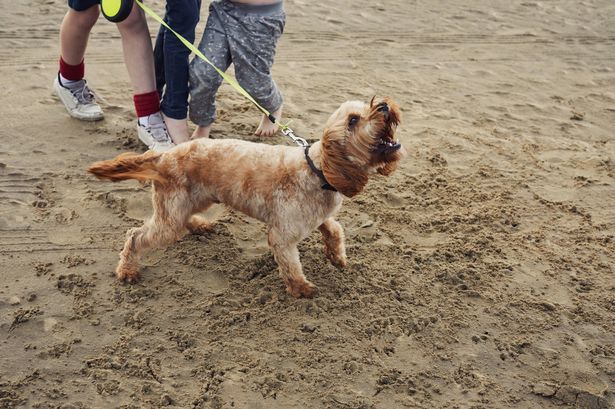World
Dog Behaviourist Highlights Breeds Prone to Aggression

Concerns about dog aggression continue to rise, particularly regarding the American XL Bully breed, often cited in discussions about dog attacks. Jeanette Muldoon, a dog behaviourist with the Family Dog Club, provides insights into the broader issue of canine aggression, emphasizing that it is not solely a matter of breed but rather a combination of factors that influence a dog’s behaviour.
In a statement made in 2024, Muldoon remarked, “I don’t believe there is an aggressive dog breed as such. I believe there are some breeds which, if their needs aren’t met, may show aggressive tendencies through frustration.” This highlights the complexity of aggression in dogs, which often stems from a lack of understanding of their behaviour and body language.
Working Breeds and Aggression Potential
Muldoon identified ‘working breeds’ as a category that could display unpredictable behaviour. Breeds such as German Shepherds and Boxers, commonly employed in police work, along with Rottweilers and Dobermanns, fall into this classification. Surprisingly, Labrador Retrievers, one of the most popular breeds in the UK, are also considered working dogs, according to Horse and Hound. Despite their friendly reputation, Labradors require significant physical activity to prevent frustration; specifically, they need at least two hours of exercise daily.
Muldoon explained the potential risks associated with larger breeds. “The bigger the dog, the more potentially dangerous they could be if they show aggression,” she noted. Some dogs are bred for aggression, particularly in fighting contexts, leading to unfortunate outcomes where these animals are abandoned when they do not meet the breeder’s expectations for aggression.
Understanding and Managing Aggression
It is essential to recognize that any dog can exhibit aggressive behaviour, influenced by emotional triggers, past experiences, health issues, and their environment. “Aggression can certainly be linked to trauma,” Muldoon stated. “If a dog has had a traumatic incident or past, then this can cause them to react in certain situations in an aggressive manner.”
She elaborated on the fight-or-flight response, explaining that if a dog feels cornered and cannot escape, it may resort to aggression as a survival mechanism. Additionally, she pointed out that pathways within a dog’s brain can be affected by trauma, leading to aggressive reactions.
While it is unrealistic to expect to “train your dog out of aggression,” Muldoon emphasized the importance of creating an environment where dogs feel secure. “There is so much you can do to help with aggression,” she explained. “You need to start with management and look into how you can reduce the rehearsal of aggression.”
Addressing the dog’s emotional well-being is crucial. Owners should consider whether their dog is in pain, experiencing fear, or feeling stressed. “If you just look at the symptoms, you won’t get to the cause of the aggression,” Muldoon warned.
To effectively manage aggressive behaviour, she advocates working with a behaviourist to identify the root causes and implement appropriate management strategies. Training is only a small component of the overall approach.
As discussions around dog aggression evolve, it remains vital to understand that behaviour stems from a complex interplay of factors rather than solely from breed characteristics. Recognizing and addressing these underlying issues can lead to healthier relationships between dogs and their owners.
-

 Health3 months ago
Health3 months agoNeurologist Warns Excessive Use of Supplements Can Harm Brain
-

 Health3 months ago
Health3 months agoFiona Phillips’ Husband Shares Heartfelt Update on Her Alzheimer’s Journey
-

 Science2 months ago
Science2 months agoBrian Cox Addresses Claims of Alien Probe in 3I/ATLAS Discovery
-

 Science2 months ago
Science2 months agoNASA Investigates Unusual Comet 3I/ATLAS; New Findings Emerge
-

 Science1 month ago
Science1 month agoScientists Examine 3I/ATLAS: Alien Artifact or Cosmic Oddity?
-

 Entertainment5 months ago
Entertainment5 months agoKerry Katona Discusses Future Baby Plans and Brian McFadden’s Wedding
-

 Science1 month ago
Science1 month agoNASA Investigates Speedy Object 3I/ATLAS, Sparking Speculation
-

 Entertainment4 months ago
Entertainment4 months agoEmmerdale Faces Tension as Dylan and April’s Lives Hang in the Balance
-

 World3 months ago
World3 months agoCole Palmer’s Cryptic Message to Kobbie Mainoo Following Loan Talks
-

 Science1 month ago
Science1 month agoNASA Scientists Explore Origins of 3I/ATLAS, a Fast-Moving Visitor
-

 Entertainment2 months ago
Entertainment2 months agoLewis Cope Addresses Accusations of Dance Training Advantage
-

 Entertainment4 months ago
Entertainment4 months agoMajor Cast Changes at Coronation Street: Exits and Returns in 2025









